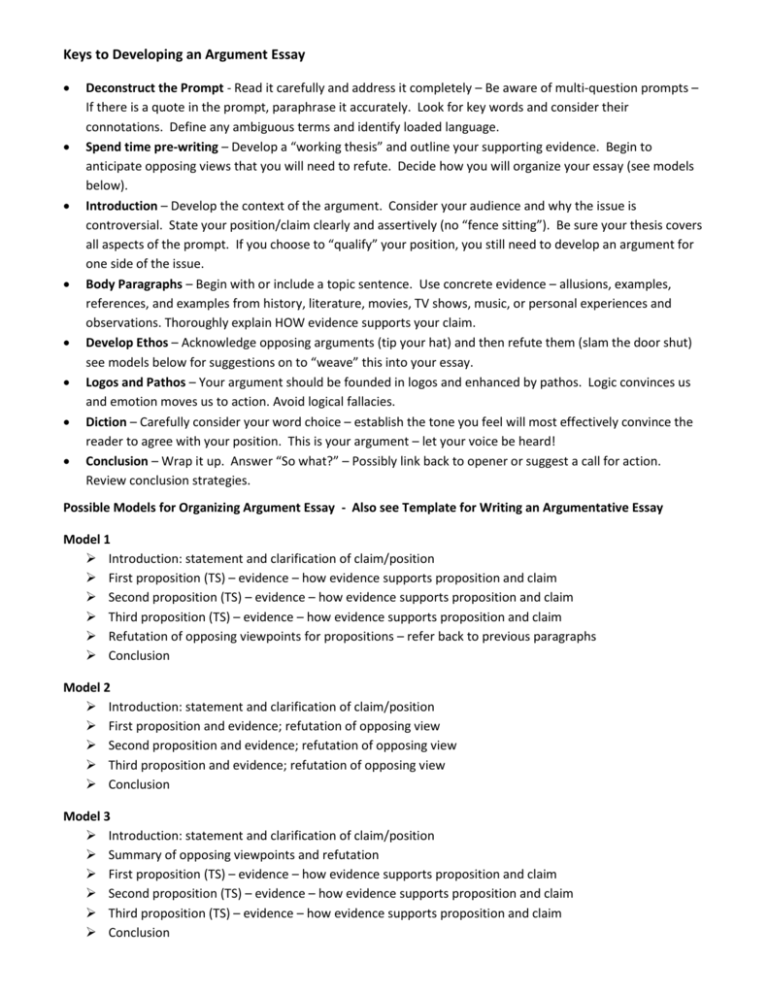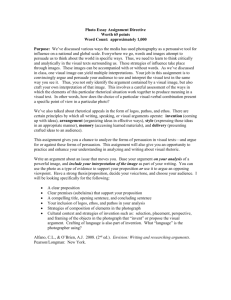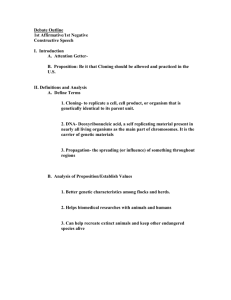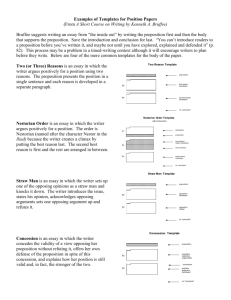Keys to Developing an Argument Essay
advertisement

Keys to Developing an Argument Essay Deconstruct the Prompt - Read it carefully and address it completely – Be aware of multi-question prompts – If there is a quote in the prompt, paraphrase it accurately. Look for key words and consider their connotations. Define any ambiguous terms and identify loaded language. Spend time pre-writing – Develop a “working thesis” and outline your supporting evidence. Begin to anticipate opposing views that you will need to refute. Decide how you will organize your essay (see models below). Introduction – Develop the context of the argument. Consider your audience and why the issue is controversial. State your position/claim clearly and assertively (no “fence sitting”). Be sure your thesis covers all aspects of the prompt. If you choose to “qualify” your position, you still need to develop an argument for one side of the issue. Body Paragraphs – Begin with or include a topic sentence. Use concrete evidence – allusions, examples, references, and examples from history, literature, movies, TV shows, music, or personal experiences and observations. Thoroughly explain HOW evidence supports your claim. Develop Ethos – Acknowledge opposing arguments (tip your hat) and then refute them (slam the door shut) see models below for suggestions on to “weave” this into your essay. Logos and Pathos – Your argument should be founded in logos and enhanced by pathos. Logic convinces us and emotion moves us to action. Avoid logical fallacies. Diction – Carefully consider your word choice – establish the tone you feel will most effectively convince the reader to agree with your position. This is your argument – let your voice be heard! Conclusion – Wrap it up. Answer “So what?” – Possibly link back to opener or suggest a call for action. Review conclusion strategies. Possible Models for Organizing Argument Essay - Also see Template for Writing an Argumentative Essay Model 1 Introduction: statement and clarification of claim/position First proposition (TS) – evidence – how evidence supports proposition and claim Second proposition (TS) – evidence – how evidence supports proposition and claim Third proposition (TS) – evidence – how evidence supports proposition and claim Refutation of opposing viewpoints for propositions – refer back to previous paragraphs Conclusion Model 2 Introduction: statement and clarification of claim/position First proposition and evidence; refutation of opposing view Second proposition and evidence; refutation of opposing view Third proposition and evidence; refutation of opposing view Conclusion Model 3 Introduction: statement and clarification of claim/position Summary of opposing viewpoints and refutation First proposition (TS) – evidence – how evidence supports proposition and claim Second proposition (TS) – evidence – how evidence supports proposition and claim Third proposition (TS) – evidence – how evidence supports proposition and claim Conclusion







